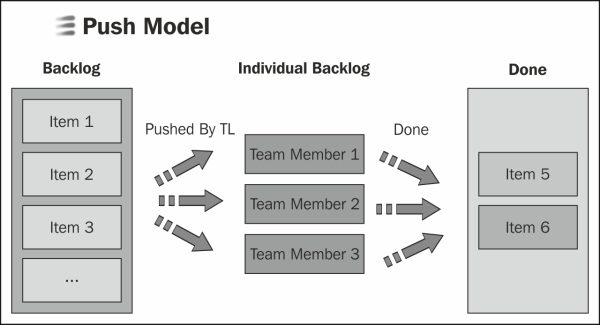The old methodology usually follows the push model where the work is pushed or assigned to a team member or a team. Usually the team leader or manager assigns tasks to different team members as shown in the following diagram:

There are multiple issues with the push model, such as a lot of waste in the process, individual backlog burdens, no team collaboration, no clear visibility in bottlenecks in the system, and work may get stuck at different levels in the system.
A typical pull model looks as shown in the following diagram:

Some of the pull system benefits are:
It supports the continuous flow of work
Work is done as a team
There is a clear indication of state of work
Work in progress is limited for each status
There is a lesser burden on individual backlog
It allows better planning and prioritization of work
It allows improved continuous delivery
Kanban system implements the pull model for continuous delivery by eliminating the waste and focusing on continuous improvement...



